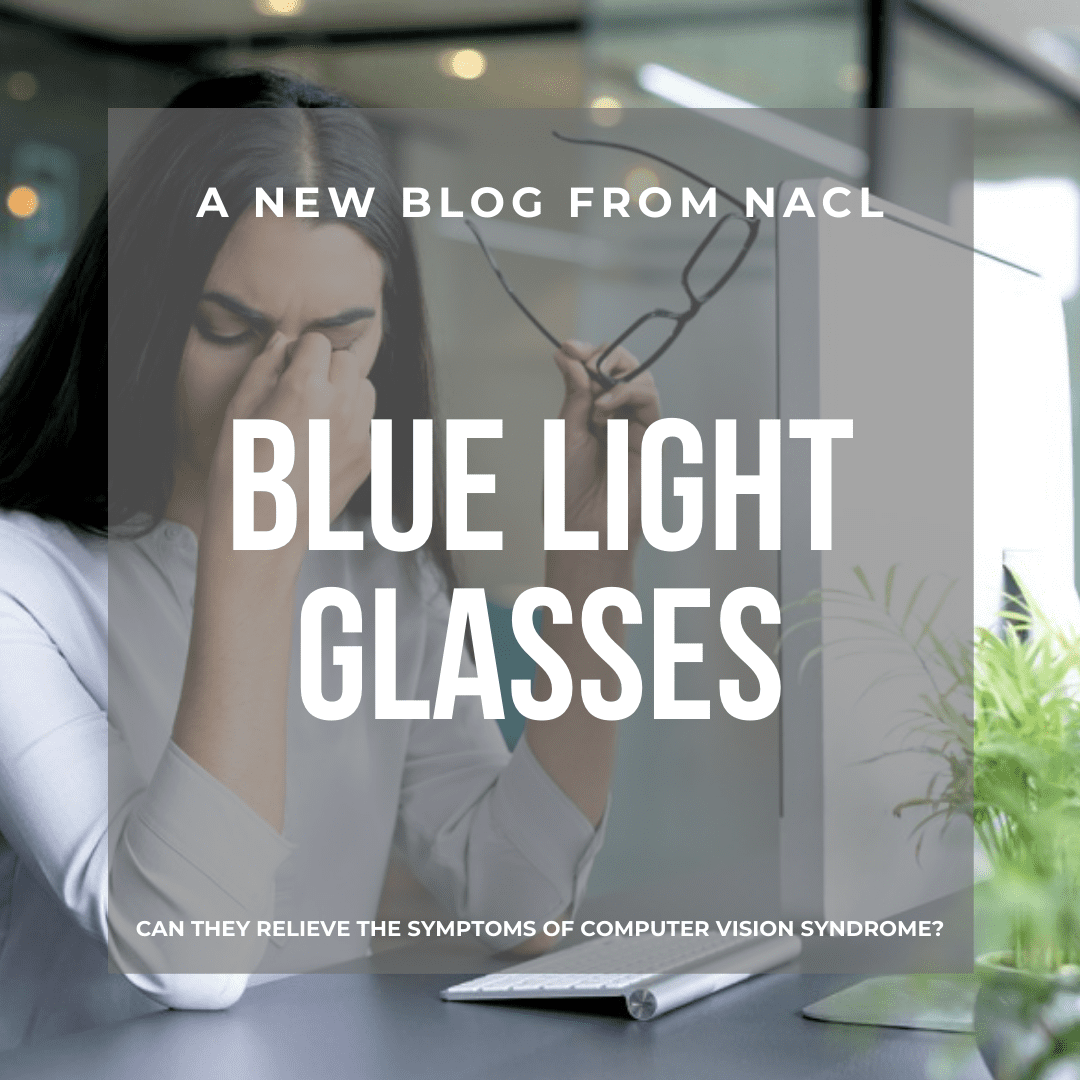Can they really help with CVS?
During the pandemic we are all spending a lot more time staring at screens throughout the course of our workdays and even when we stop work. This has left many people with dry and irritated eyes which increases eye strain and overall levels of fatigue. The source of many of these eye strain issues may be digital screens which emit blue light. Various studies have concluded that blue light from displays can have negative consequences on your eyes and can also negatively impact your sleep schedule as it can affect your circadian rhythms which act like an internal clock that helps you know when the proper time to sleep is.
Because we can’t escape using computers, tablets and phones eyewear manufacturers and opticians are now touting blue light blocking glasses as the latest wellness trend.
Blue light blocking lenses have customized lenses that are said to block or filter out the blue light emitted from various digital screens. The various companies making these lenses claim they protect your eyes from glare and can help reduce potential damage to your sight from prolonged exposure to blue light.
Blue light itself is a short-wave blue light in the UV spectrum of colors visible to the human eye. Its wavelength is in the blue portion of the visible spectrum, which is roughly 400–500 nanometers (nm). Researchers believe that peak light damage occurs roughly at 440nm.
The blue light blocking lenses being touted currently use a combination of lens technologies inherent in the manufacturing process, and thin-film coatings that block or heavily filter the blue spectrum of light.
Prices of these glasses range from under $20 to several hundred dollars for designer brand frames with blue blocking technology.
With all the marketing and studies behind blue light blocking glasses, the question remains; do they actually work?
The science on blue light is still in debate. Although many believe blue light doesn’t “help” your vision issues or sleep patterns, the truth is that most of the issues people experience from digital screens actually fall under a term called computer vision syndrome (CVS) or digital eye strain.
Computer vision syndrome covers a broad range of eye discomfort issues. While looking at digital screens our eyes are constantly shifting focus and moving. Additionally, the glare and contrast from screen exposure can be tough on your eyes. Although you may be dealing with eye irritation from a day of working on your computer and other digital screens, your eye discomfort may not be directly attributed to blue light exposure.
Although blue light blocking lenses may help slightly, there are some things you may be able to do before spending money that could really help reduce eyestrain issues.
Practice the 20-20-20 rule. Every 20 minutes look at something 20 feet away for 20 seconds. This will help your eyes relax by changing your focus on a regular schedule.
If you know you’ll be staring at screens for an extended period, be sure to use eye drops throughout the day to help keep your eyes lubricated.
Most people sit too close to the computer which increases eye strain. It is a good idea to sit at an arm’s length away from your screen.
Because the studies that prove or disprove the harm of blue light on your eyes, the best idea is to practice good screen habits throughout the day, and be sure to turn off all digital devices at least one hour before bed.
If you’re curious about more information about how coatings can enhance the performance of your optics, connect with us today!






